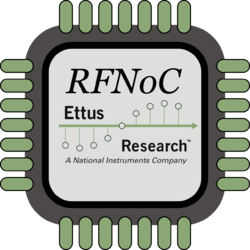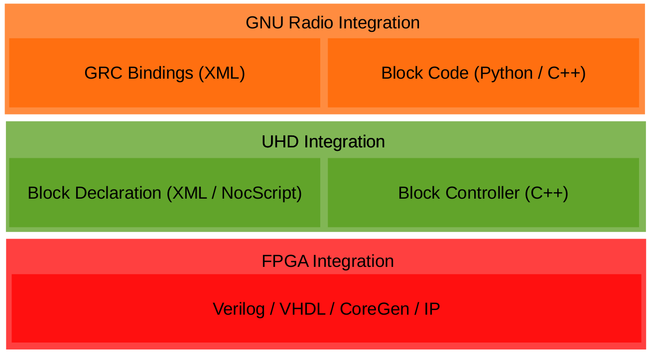Difference between revisions of "RFNoC (UHD 3.0)"
From Ettus Knowledge Base
(→Overview) |
(→RFNoC Resources) |
||
| Line 39: | Line 39: | ||
==RFNoC Resources== | ==RFNoC Resources== | ||
2016 | 2016 | ||
| − | *[[Getting_Started_with_RFNoC_Development | + | *[[Getting_Started_with_RFNoC_Development|Getting Started with RFNoC Development]] |
| − | + | ||
*[https://drive.google.com/file/d/0B6ccrJyAZaq3MTRDbmVUR0gwVU0/view GNU Radio 2016 Conference Presentation] | *[https://drive.google.com/file/d/0B6ccrJyAZaq3MTRDbmVUR0gwVU0/view GNU Radio 2016 Conference Presentation] | ||
Revision as of 19:21, 16 January 2017
Contents
Overview
Framework and Data Flow Example
Below is a figure of the RFNoC stack.
The example below shows basic data flow of an RFNoC application. While this shows one possible data flow, there are many possible combinations from Host block to FPGA block, FPGA block to Host block, Host to Host, FPGA to FPGA, etc.
Supported Devices
- E310/E312
- X300/X310
Sample of Available Blocks
- FIFO
- FFT
- FIR
- fosphor (real-time spectrum analyzer)
- Decimator (Keep 1 in N)
- Log Power Calculator
- Radio Interface
- Vector IIR (moving average)
- Window multiplier (for FFT)
- OFDM: Burst detection + synchronization, equalizer, packet demodulator
- and more...
RFNoC Resources
2016
2015
- Virginia Tech Video Presentation
- Virginia Tech Presentation - Introduction to RFNoC
- Virginia Tech Presentation - RFNoC Deep Dive: Host Side
- Virginia Tech Presentation - RFNoC Deep Dive: FPGA
2013



